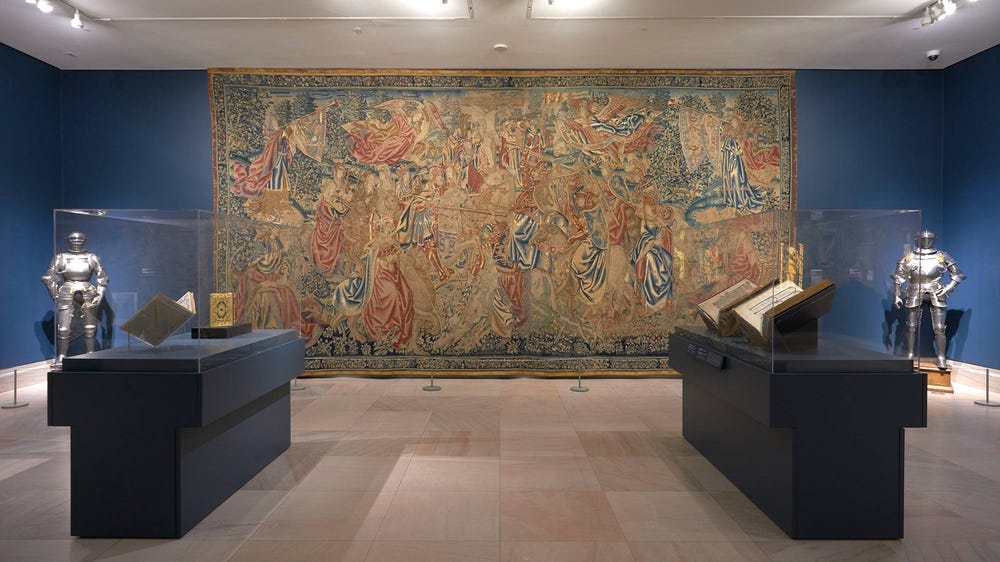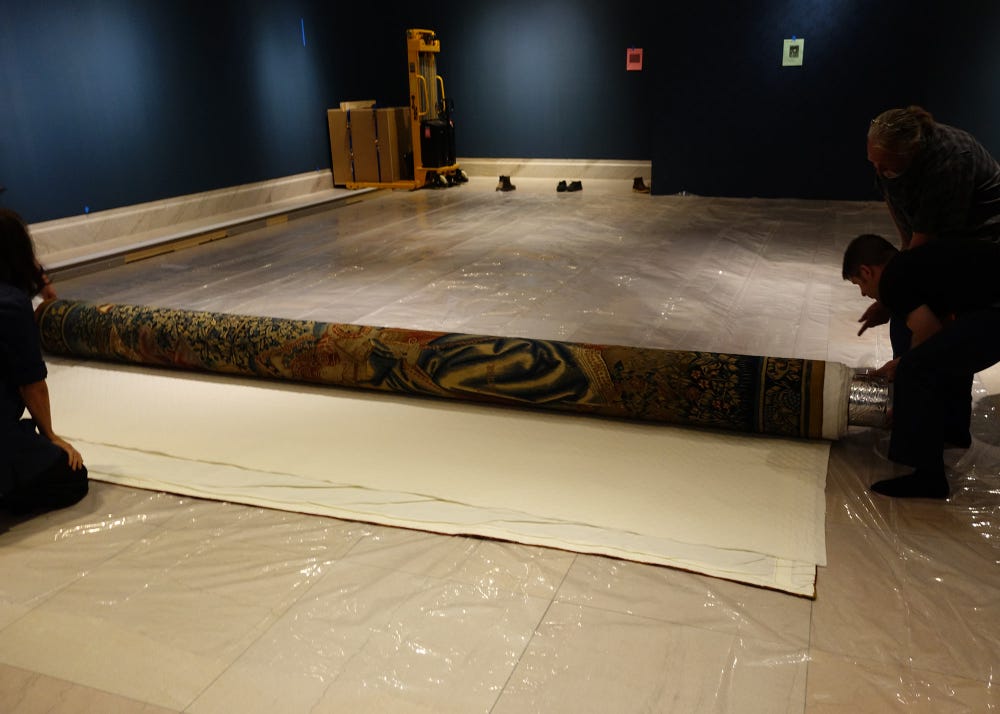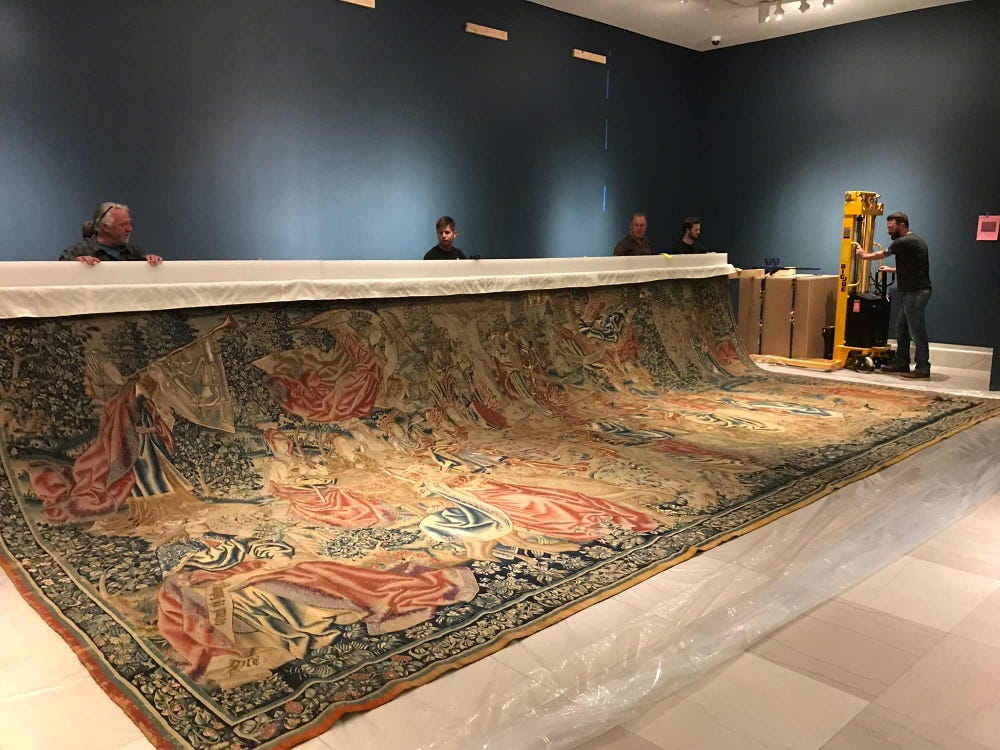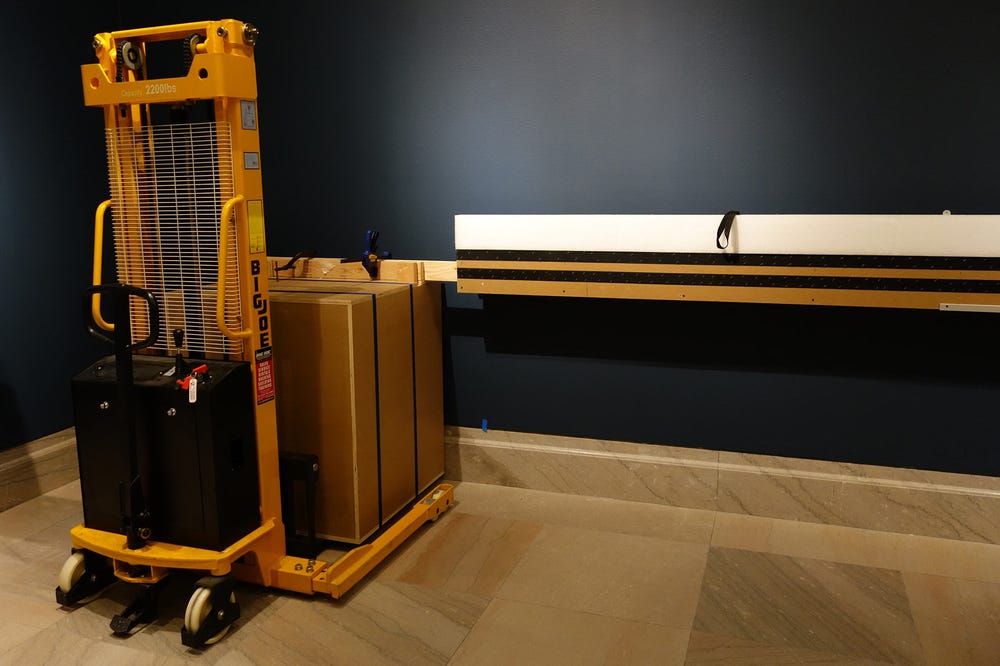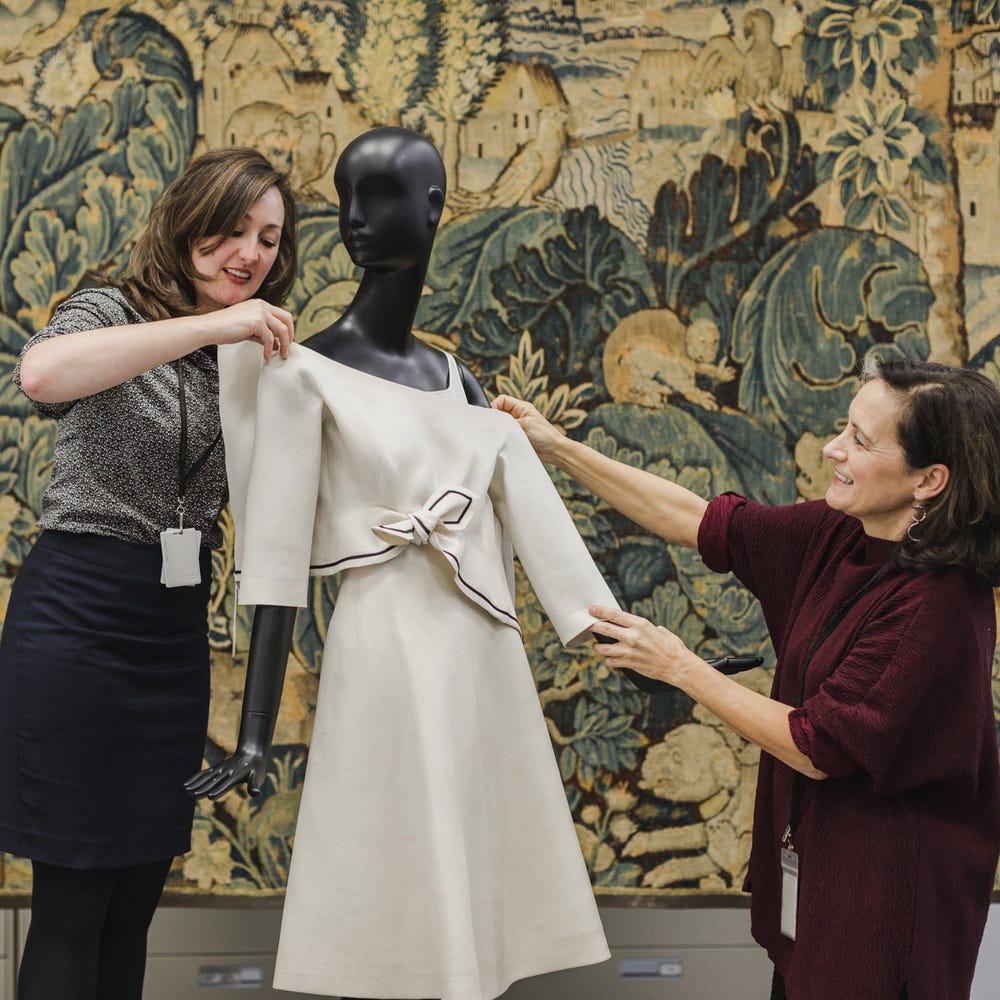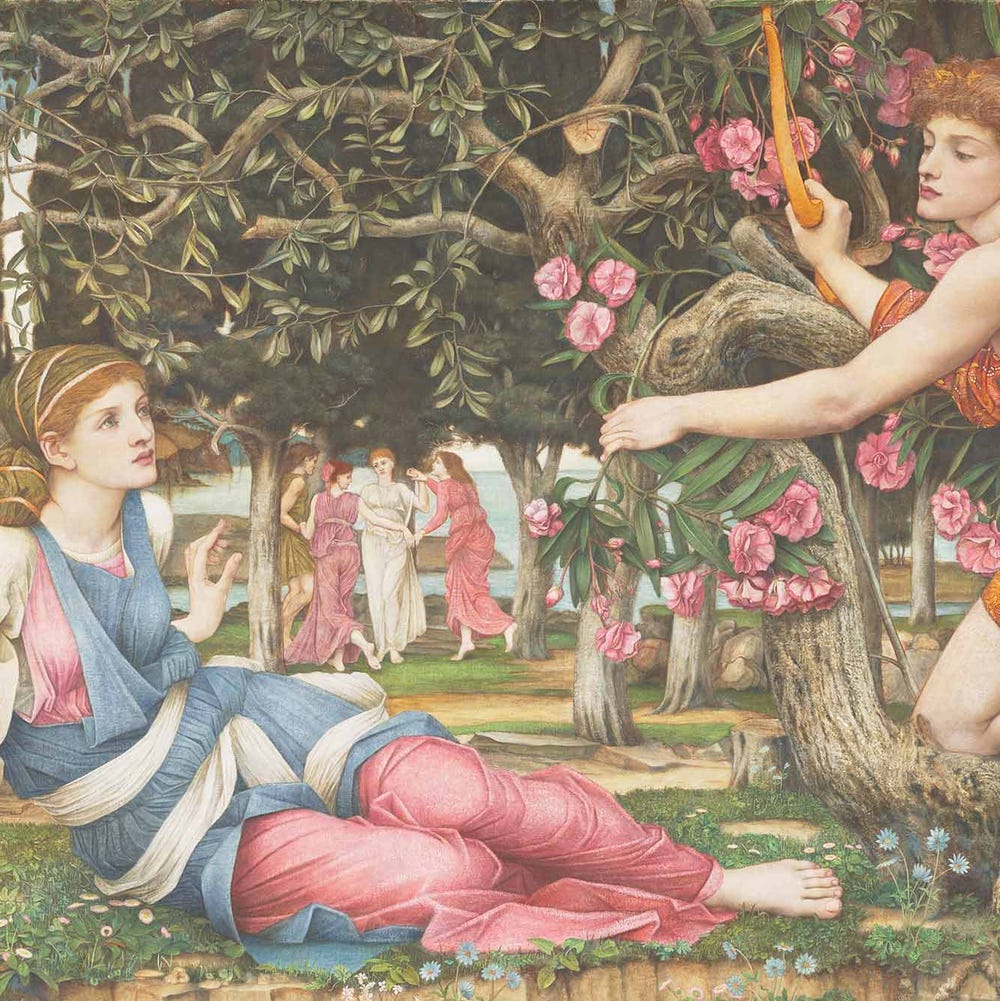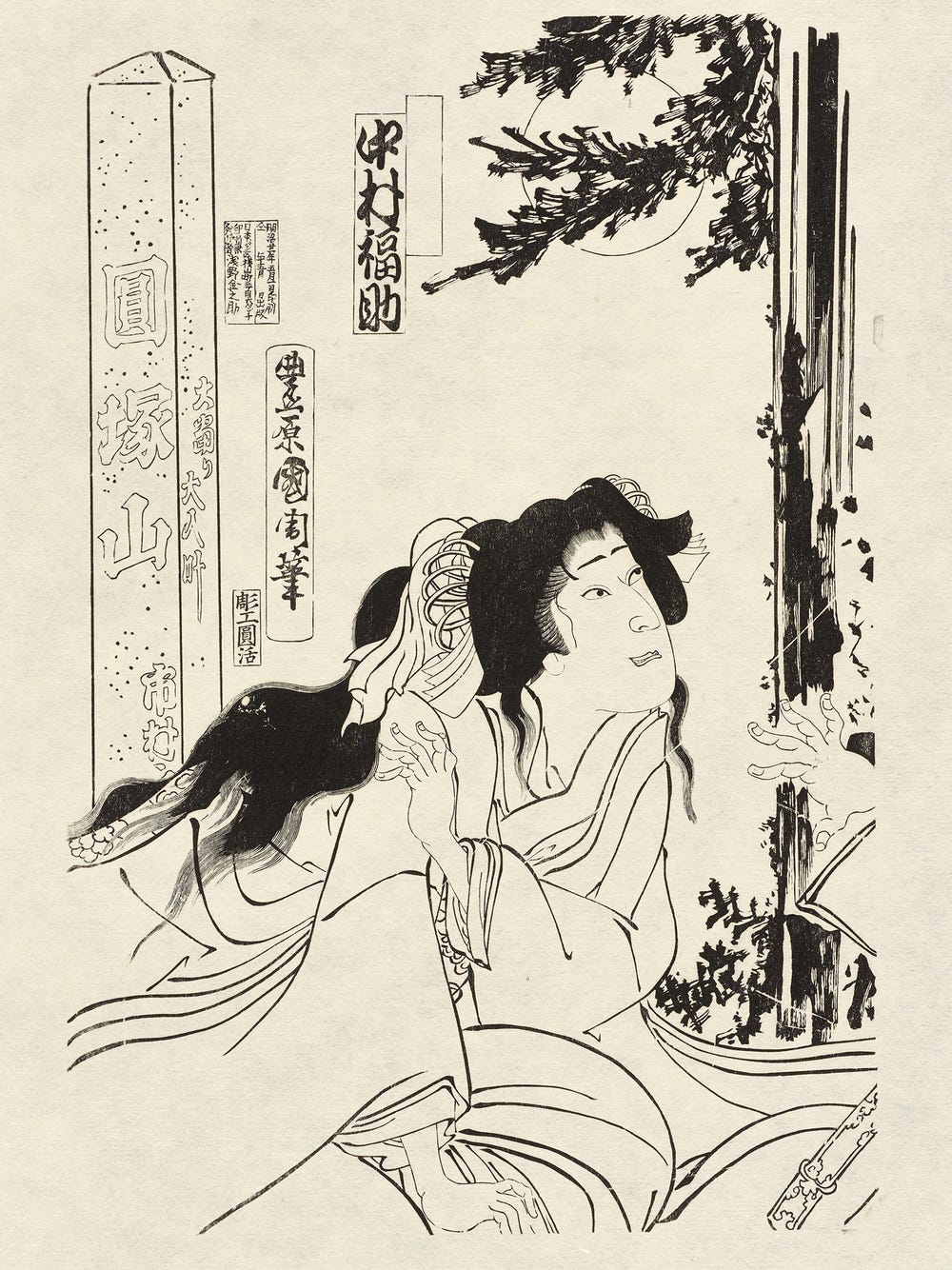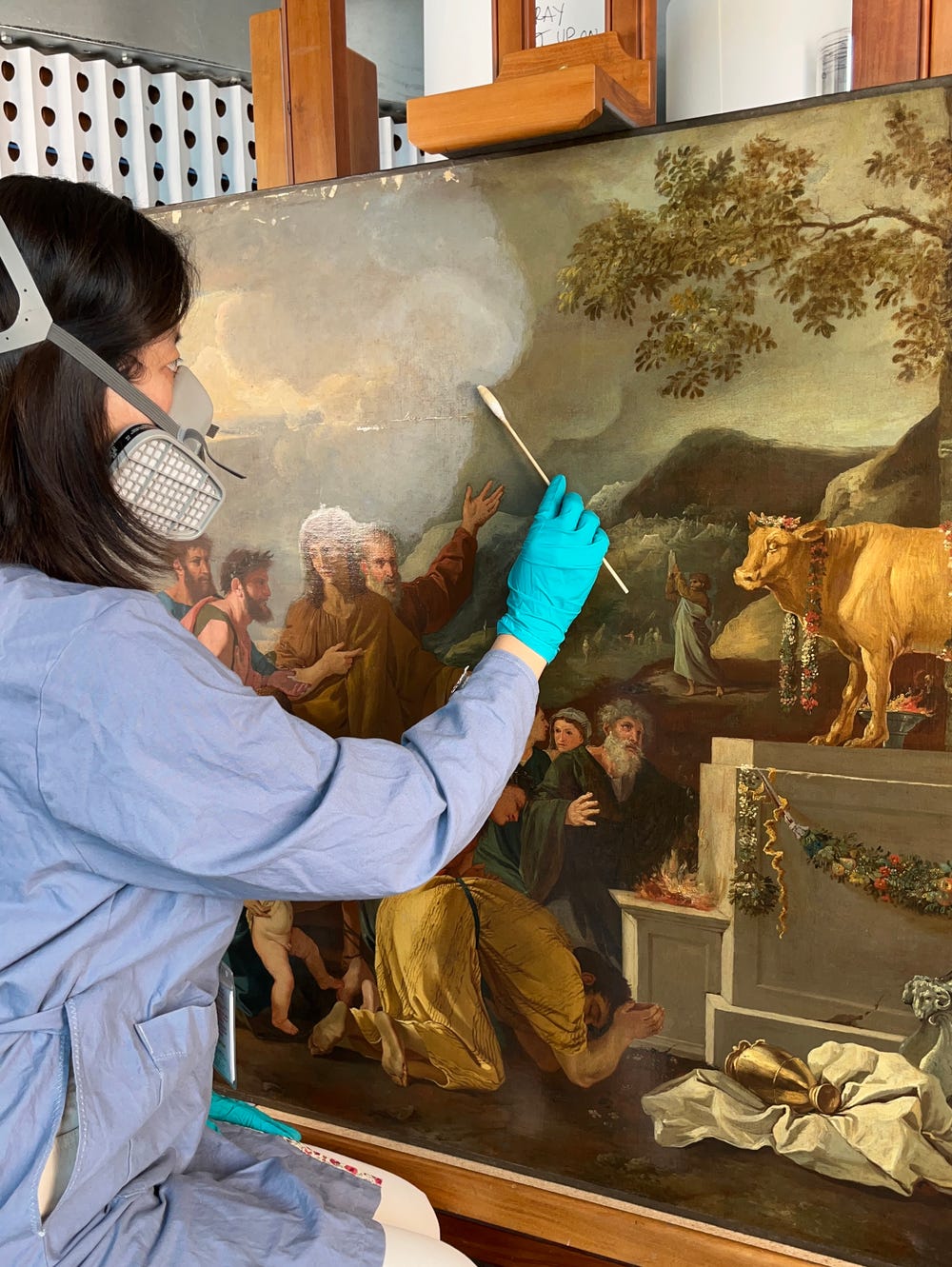The exhibition Truth and Beauty: The Pre-Raphaelites and the Old Masters at the Legion of Honor was created by a team that came together across the Fine Arts Museums of San Francisco. All four conservation departments at the de Young and Legion of Honor, including objects, paintings, works on paper, and textiles, were engaged in the preparations for this installation. Colleagues in the four departments helped shed new light on select works from the Museums’ permanent collections. In this series, our conservators share a behind-the-scenes look at the numerous preparations that took place before the exhibition opened to the public.
Hanging a very large tapestry (with inches to spare!)
The most challenging textile to install in the Truth and Beauty exhibition was The Combat of the Vices and Virtues, woven in Brussels between 1510 and 1515, and one of four tapestries from the Redemption of Man series that are part of the Fine Arts Museums’ permanent collection. It is the largest and oldest textile in the show, measuring 318 inches (26 1/2 feet) long, by 164 1/2 inches (13 3/4 feet) tall — and one of the largest overall, as the Redemption series is the largest tapestry set in the collection.
Hanging a textile this large is always an exercise in carefulness and coordination, and requires many hands. It is also something that our staff has had a lot of practice with over the years, and we have developed a smooth installation technique using pulleys. However, in this instance, the limited height of the room and composition of the ceiling — which negated the possibility of using a pulley system to hoist the tapestry in place — required us to develop a new installation plan.
This was a significant undertaking, which required months of preparation and collaboration across many departments within the museum. Curators, conservators, art preparators, and the exhibition designer were all involved in the planning process to ensure the tapestry could be displayed safely while fitting into the overall visual design for the show.
We first needed to confirm that the tapestry would fit on the wall, so obtaining accurate measurements was crucial during the planning process. We knew there was a total of 167 inches from floor to ceiling — so the tapestry was taken from storage and unrolled, allowing us to take multiple measurements. With a maximum height of 164 1/2 inches, the tapestry would just fit.
The Combat of the Vices and Virtues tapestry was slowly unrolled in the exhibition galleries.
However, the decision to hang the tapestry on the wall with just inches to spare was not taken lightly. First, there was concern that it may actually gain a few inches in height when hung, due to the hanging orientation. Tapestries are generally woven on their sides, which means when on display they hang from the weaker wool and silk weft elements, which can potentially stretch under the weight of the textile. (Once the tapestry was up, we measured the overall height and found that it had indeed stretched a little more than an inch.) Second, having the bottom edge of the tapestry so close to the floor is not ideal from a conservation perspective, as it makes the gallery floor harder to clean and the tapestry itself more prone to gathering dirt and dust.
Many flat textiles are hung using a Velcro-based system, and this is our preferred method for displaying tapestries. Velcro is extremely strong and thus able to support the heavy weight of such a large object. In 2008, for instance, while preparing to lend the The Combat of the Vices and Virtues to the Los Angeles County Museum of Art, a new lining and Velcro (loop side) were attached to the reverse of the tapestry. Because attaching Velcro is such a time-intensive process, it stays on the object when not on display, making future installations easier, as the Velcro can be reused (as it was in this case).
This meant that the bulk of the work needed to prepare the tapestry for display fell on the art preparators, who were responsible for designing and building a hanging batten with matching Velcro (hook side) to receive the tapestry. A batten is a long, flat piece of wood that attaches on its back face to the wall, and on its front face to the object, allowing it to be safely and easily mounted. The batten’s design would need to allow it to be raised smoothly and attached to the wall without the use of pulleys, all while working within the tight floor-to-ceiling height restrictions.
Once the tapestry was aligned and carefully attached using the Velcro strips, the batten was raised.
Despite tight deadlines and a demanding construction schedule, our woodshop operations specialist Jared Taylor was able to design and construct a batten that elegantly solved the problems we were facing. This, combined with much planning and practice and many dry runs by the art preparatory staff, allowed for a smooth and successful installation of the tapestry.
